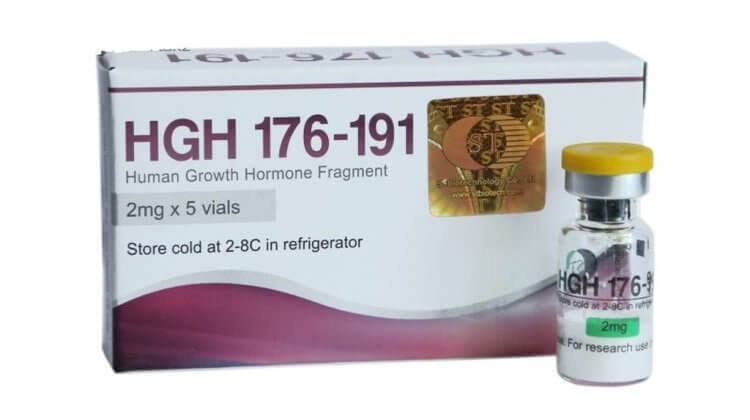
Our body is an enigmatic soup of many hormones and growth factors that determine how we develop, grow and age. One of the hormones primarily responsible for much of our early growth is aptly named ‘growth hormone.’ Like most growth factors in the body, growth hormone is a secreted protein that exerts multiple effects on gene regulation, cell growth, metabolism, differentiation, and growth and development of several organs and tissues. To accomplish these biological actions, these molecules activate specific cellular receptors that initiate one or several signal cascades within the cell. As with many other hormones, growth hormone is secreted in a pulsatile manner, which is regulated by negative and positive controls and is called a feedback system.
Growth hormone (GH) acts directly by stimulation of its own receptor on cell membranes. It also acts indirectly on peripheral target cells by stimulating synthesis and secretion of insulin-like growth factor-1 (IGF-1). The dichotomous roles of GH are an example of the complexity of hormone action. In addition to the insulin-mimicking effect, GH also antagonizes insulin’s metabolic effects. Chronic levels of elevated GH result in glucose intolerance. GH induces lipid (fats) synthesis in fat cells due to the insulin-like effects and inhibition of lipolysis (fat breakdown). However, GH also stimulates lipolysis in fat cells. When GH is administered to GH-deficient adults, their muscle volume and lean body mass increases and their body fat significantly decreases.
How do proteins such as GH elicit a specific response resulting in such a variety of effects in the body? Hormones and other growth factors deliver their ‘message’ to a target cell by interacting with their specific receptor. Each protein or peptide is synthesized within a cell according to a genetic code called DNA. Through a series of processes, the resulting protein is synthesized within a cell according to a genetic code called DNA. Through a series processes, the resulting assembled protein is comprised of lengths of amino acids that are strung together and attached by various types of chemical bonds to render a 3-dimentional shape, which is referred to as its ‘conformation.’ This physical structure and the chemical attributes of the sequences determine how the molecule binds and stimulates its receptor. The recognition of the receptor and the binding areas of the hormone result in a conformational change which then elicits a signal that is transmitted within the cell, ultimately inducing a biological response.
Through advancements in biotechnology, scientists have discovered that various fragments of many proteins involved in cell signaling elicit specific physiological responses. Scientists are now able to identify the specific domains of the intact hormones that are functional and determine what their functions are. Research labs can sequence, synthesize and amplify these fragments and discover how they elicit their effects by adding them to cell cultures (in vitro) grown in the laboratory.
Researchers have identified the fragment of human GH (hGH) that is responsible for the insulin-like response in humans and another fragment that induces lipid metabolism. They have synthesized this latter fragment and shown that chronic oral and injected (acute) administration of these fragments reduces fat mass in rats.(1) They have also shown that it mobilizes lipids in human fat cells in vitro. The fragment peptides were able to withstand degradation by gastrointestinal enzymes, and were absorbed and appeared in the plasma of the rats. However, whether the peptide fragments can withstand digestion and be absorbed in the human gastrointestinal environment remains to be determined.
Synthesis of fragmented hGH and other growth factors may hold substantial promise for future medical administration of hormones without the adverse effects that are often experienced from using the intact molecules. Physicians may soon be able to prescribe an analog of hGH that alters body composition without inducing glucose intolerance. Oral administration also offers an easy and non-invasive route of administration for effective pharmacotherapy to treat obesity and diabetes. I foresee the application of this technology to other synthesized hormone and growth factor fragments as successful adjunct therapy for other diseases such as cancer. The future looks bright for new disease treatments.
References
1. Heffernan MA, Jiang WJ, Thorburn AW, Ng FM. Effects of oral administration of a synthetic fragment of human growth hormone on lipid metabolism. Am J Physiol Endocrinol Metab 279:E501-E507, 2000.
About the author
Elzi has spent the last several decades trying to determine where 'home' is: from New York, Maine, California, Oregon and now Texas. As well, her career has encompassed tool & die apprentice, forest ranger, assistant extension agent, mother, sheep and horse rancher, and mad research scientist. She has also been a competitive bodybuilder, but has found true joy in powerlifting. When Elzi is not playing fetch with her 1200 lb four-footed buddy, she is most happy in the gym and in a research lab.
No replies yet
Loading new replies...
Join the full discussion at the MESO-Rx →